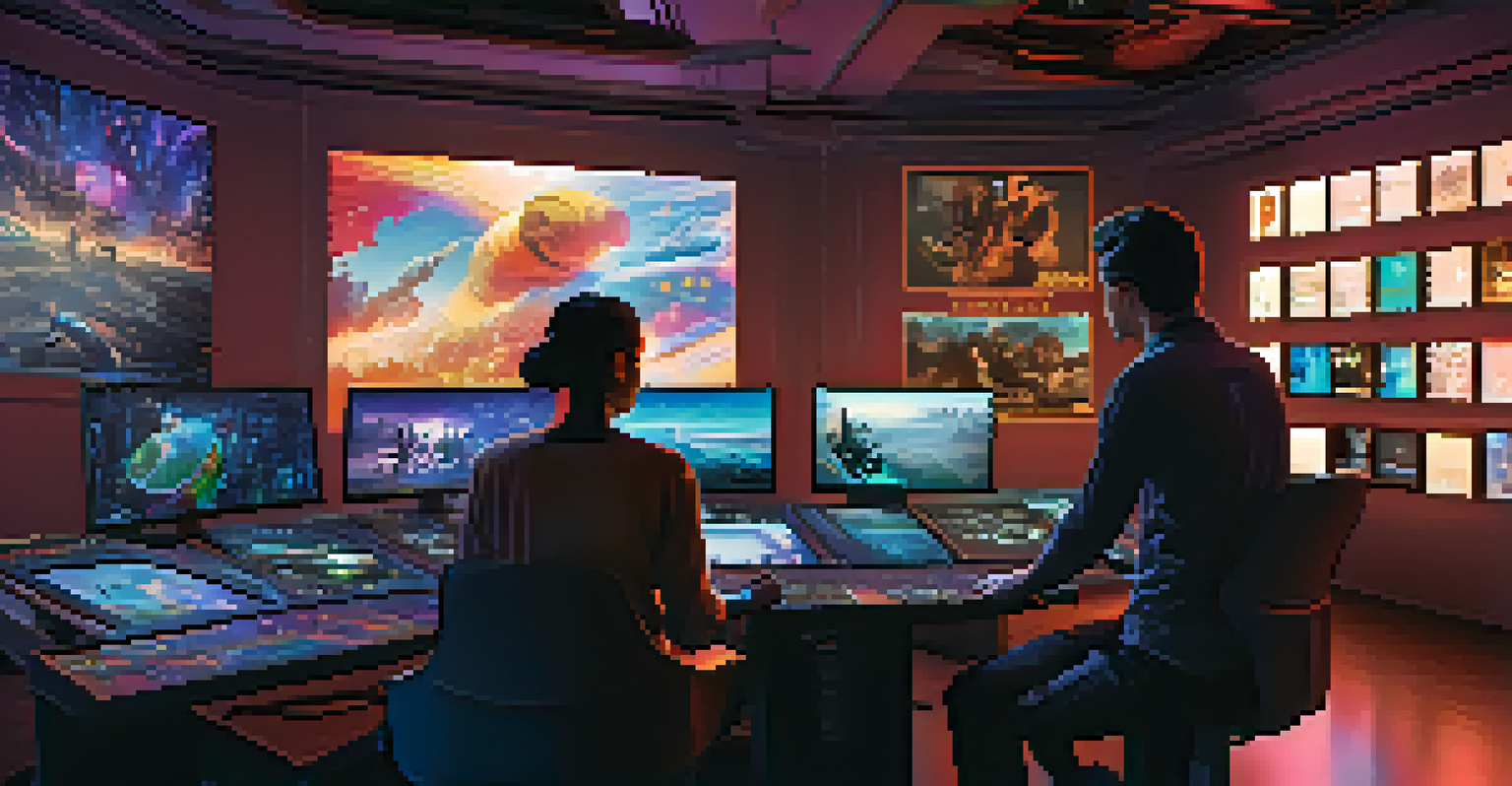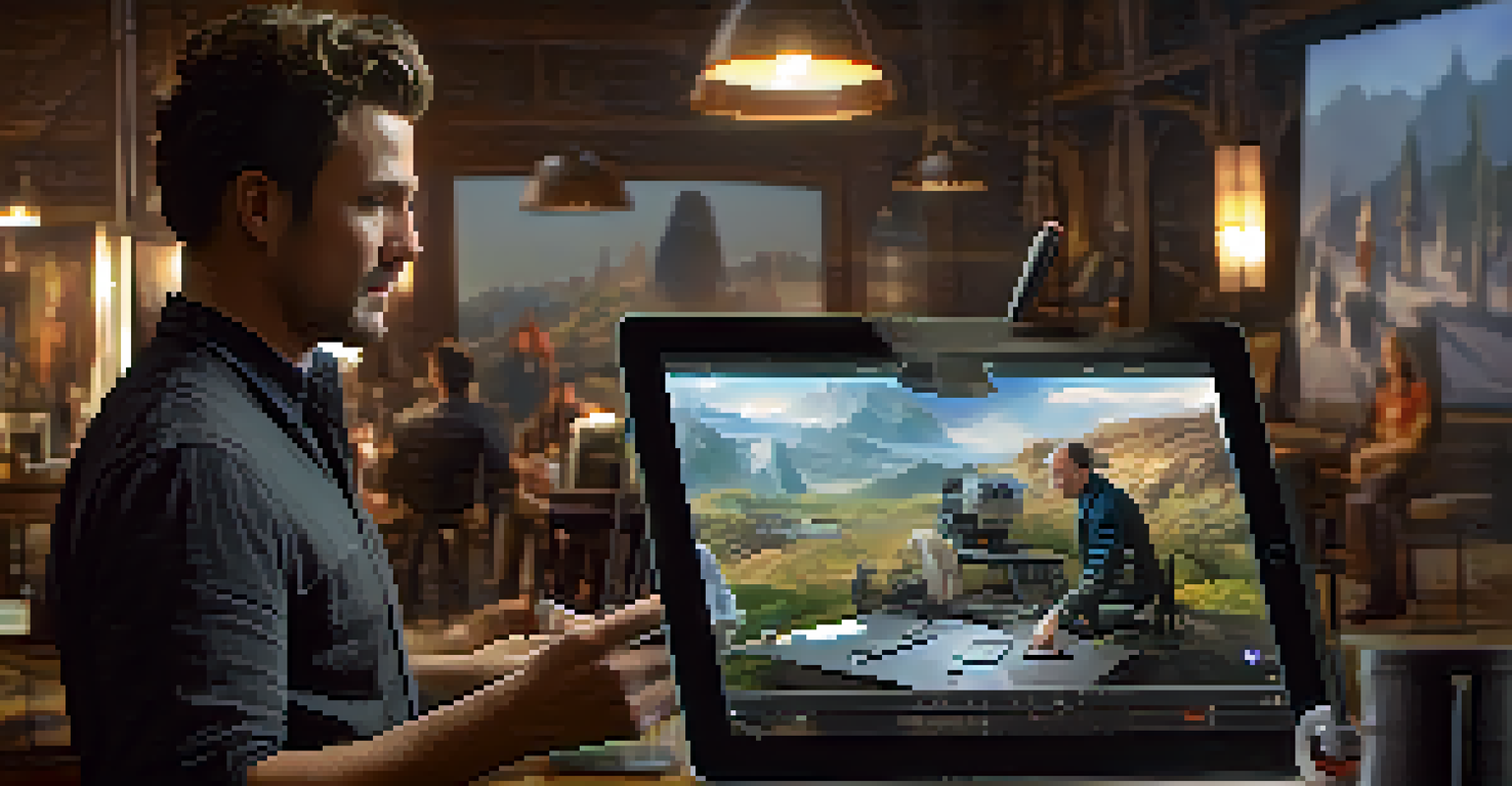The Collaboration Between Directors and Visual Effects Artists

Understanding the Role of Directors in Film Production
Directors are the creative visionaries behind a film. They oversee every aspect of production, guiding the story from script to screen. Their decisions shape the film's style, pacing, and emotional impact, making their role crucial for a successful project.
The director is the captain of the ship, but the visual effects artists are the wind in its sails.
In collaboration with various departments, directors communicate their vision to ensure the film resonates with audiences. They work closely with actors to bring characters to life and with cinematographers to capture stunning visuals. This multifaceted role requires a blend of creativity and leadership.
Ultimately, a director’s ability to articulate their vision lays the groundwork for effective collaboration with visual effects artists. This partnership is essential, especially in modern filmmaking where VFX play a significant role in storytelling.
The Essential Role of Visual Effects Artists
Visual effects (VFX) artists are the magicians of filmmaking, creating stunning visuals that transport audiences to different worlds. They use advanced technology and artistry to bring everything from epic battles to subtle enhancements to life. Without their expertise, many modern films would fall short of their visual ambitions.

These artists work in various stages of production, from pre-visualization during the planning phase to post-production where the final touches are added. Their work can involve CGI, compositing, and animation, making it a highly technical field that requires both artistic and technical skills.
Directors Shape Film's Vision
Directors are the creative forces behind a film, guiding its style, pacing, and emotional depth from script to screen.
The collaboration with directors is vital as it ensures that the visual effects align seamlessly with the director's vision. When this synergy exists, the result is a coherent and immersive cinematic experience.
The Collaborative Process: From Concept to Screen
The collaboration between directors and VFX artists often begins in the pre-production stage. During this phase, directors share their vision and specific ideas for visual effects, setting the foundation for the artists’ work. This early dialogue is crucial for establishing a clear direction.
In film, the collaboration between directors and visual effects artists is like a dance—each step must be in sync to create something beautiful.
Once the film is in production, directors and VFX artists continue to communicate regularly. They discuss scenes that require special effects, and visual artists may even provide mock-ups or tests to help directors visualize the final outcomes. This iterative process allows for adjustments and refinements.
By the time post-production arrives, a solid partnership has been established. Directors rely on VFX artists to enhance scenes without overshadowing the narrative, ensuring a balanced final product. This collaborative spirit is what leads to breathtaking results on screen.
Challenges Faced in the Collaboration
Despite the creative synergy, challenges often arise in the collaboration between directors and VFX artists. Tight deadlines can lead to pressure on both sides, potentially resulting in miscommunication or rushed work. It's essential for both parties to maintain open lines of communication to address issues as they arise.
Budget constraints also play a significant role in shaping the collaboration. Directors may have a grand vision that VFX artists want to bring to life, but financial limitations can impact the extent of what’s possible. Finding innovative solutions within these constraints can be a challenge.
VFX Artists Bring Ideas to Life
Visual effects artists use advanced technology and creativity to create stunning visuals that enhance storytelling in modern films.
Moreover, differing artistic visions can lead to conflicts. Directors may envision a specific look or feel, while VFX artists might have their own interpretations. Balancing these perspectives while staying true to the film's core can be a delicate dance.
Technology's Impact on the Collaboration
Technology has revolutionized the way directors and VFX artists collaborate. Advanced software and tools have made it easier for artists to create and share their work, allowing for quick feedback and adjustments. This has significantly streamlined the creative process.
Moreover, real-time rendering and virtual reality have opened new avenues for collaboration. Directors can now see how visual effects will look on set before filming, enabling more informed decisions. This technological advancement fosters a more dynamic and interactive partnership.
However, keeping up with rapidly evolving technology can also be a double-edged sword. Both directors and VFX artists must continuously adapt to new tools and trends. Embracing change while maintaining a shared vision is key to a successful collaboration.
Successful Examples of Collaboration in Film
Many iconic films have showcased successful collaborations between directors and visual effects artists. For instance, James Cameron's 'Avatar' pushed the boundaries of VFX, thanks to a close partnership with his visual effects team. Their collaboration resulted in groundbreaking technology that set new standards in the industry.
Another notable example is Peter Jackson’s 'The Lord of the Rings' trilogy, where meticulous planning and communication between Jackson and his VFX team brought Tolkien's world to life. The seamless integration of practical effects and CGI created a visually stunning experience beloved by fans.
Collaboration is Key in Filmmaking
The partnership between directors and VFX artists is crucial for ensuring that visual effects align with the overall vision of the film.
These examples highlight that when directors and VFX artists work together harmoniously, the results can be nothing short of phenomenal. It’s a testament to the power of collaboration in creating unforgettable cinematic moments.
The Future of Collaboration in Filmmaking
As technology continues to evolve, the collaboration between directors and VFX artists will only grow more complex and integral to filmmaking. Innovations like artificial intelligence and machine learning are beginning to influence how visual effects are created and integrated into projects.
This future could lead to even more collaborative practices, where directors and VFX artists can work together in real-time, enhancing creative possibilities. Imagine a world where visual effects can be adjusted on-the-fly during filming, giving directors immediate feedback on their vision.

Ultimately, the future of filmmaking hinges on strong collaborations. As both fields continue to evolve, embracing change and nurturing partnerships will be vital in creating the next generation of cinematic experiences.